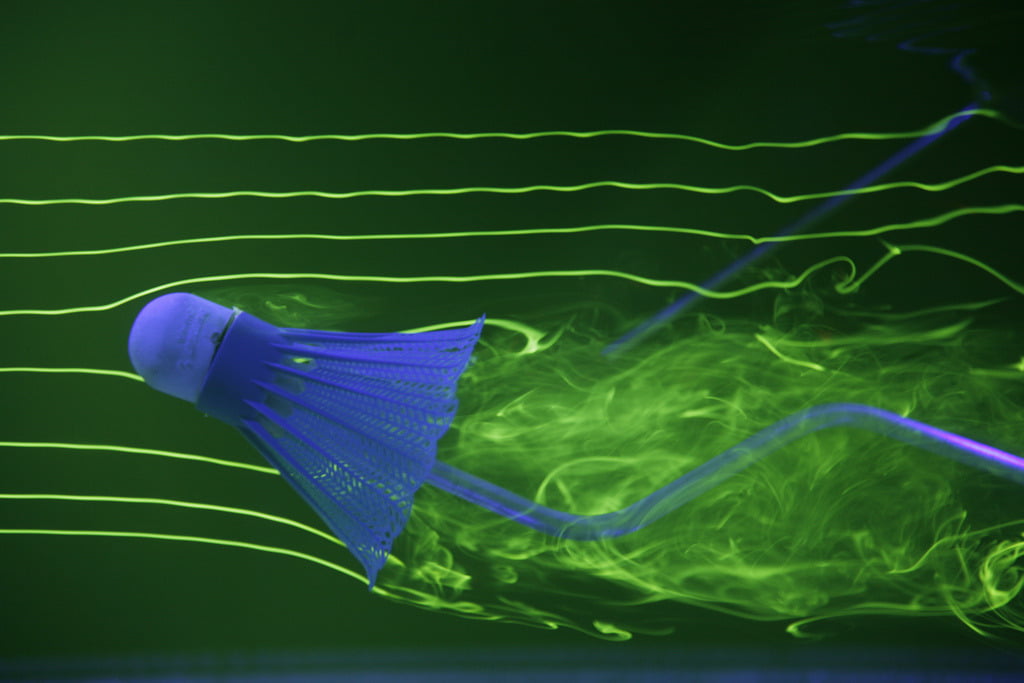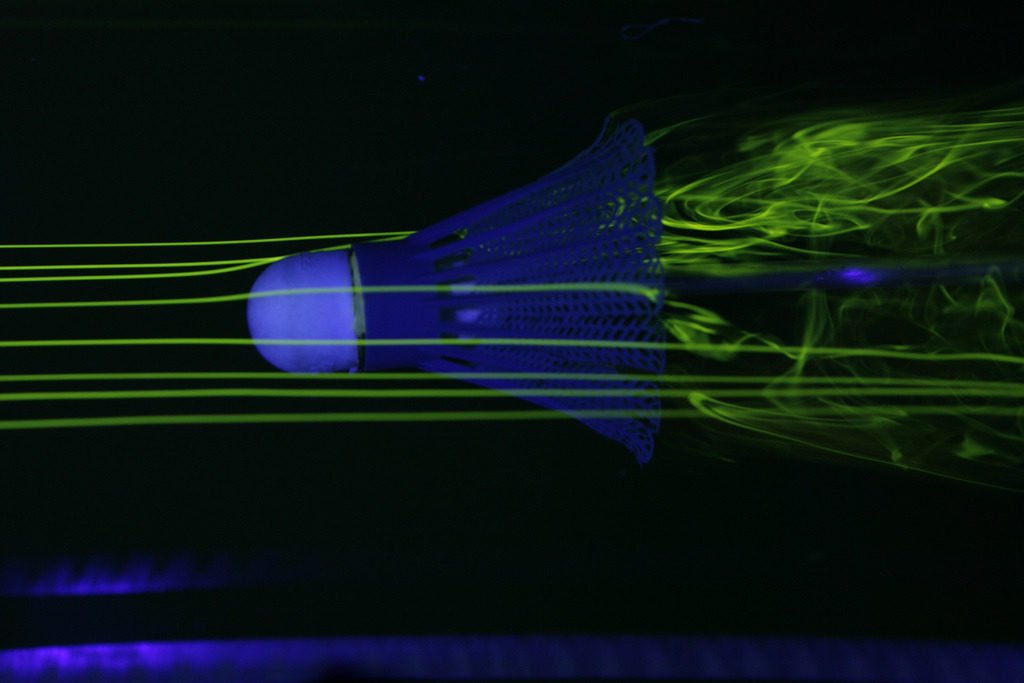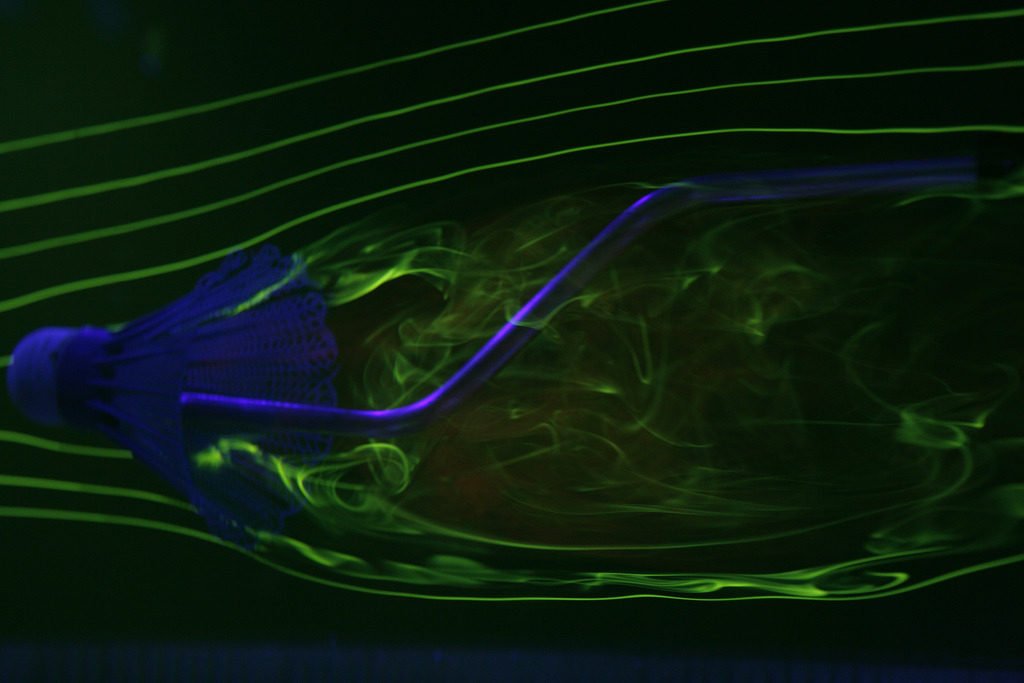Badminton is unusual among racquet sports because it does not use a sphere as its projectile. Instead players hit a shuttlecock, traditionally made from a cork ball and a skirt of goose feathers. Despite its unusual shape, the shuttlecock reaches some of the fastest speeds in sports – over 330 kph (200 mph)! The shuttlecock’s high-drag form quickly slows shots down but also gives the game very different trajectories compared to other racquet sports.
It’s likely that, if you’ve played badminton yourself, you’ve played with a shuttlecock that has a plastic skirt rather than a feathered one. These synthetic shuttlecocks are cheaper and more durable, but they also have different drag characteristics than their feathered cousins. At low speeds, synthetic shuttlecocks have more drag than feathered ones, but at high speeds, the opposite is true. This is because the plastic skirt deforms more easily than the feathers, causing a synthetic shuttlecock’s skirt to collapse into a shape with less drag. (Video credit: Science Friday; research credit: F. Alam et al.)
Join us throughout the Rio Olympics for more fluid dynamics in sports. If you love FYFD, please help support the site!




